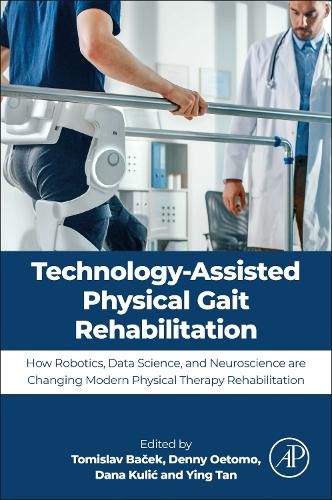Readings Newsletter
Become a Readings Member to make your shopping experience even easier.
Sign in or sign up for free!
You’re not far away from qualifying for FREE standard shipping within Australia
You’ve qualified for FREE standard shipping within Australia
The cart is loading…






Technology-Assisted Physical Gait Rehabilitation: How Robotics, Data Science, and Neuroscience are Changing Modern Physical Therapy delves into the integration of advanced computational modeling, robotic systems, data analytics, and neuroscientific principles to revolutionize physical gait therapy. This book addresses rehabilitation techniques for conditions like stroke, traumatic brain injury, and incomplete spinal cord injury, showcasing a multidisciplinary approach that brings together expertise from various domains. This comprehensive volume gathers insights from leading experts in robotics, human biomechanics, physical therapy, neuroscience, engineering, and medicine.
It discusses current advancements and future directions in technology-assisted gait therapy, emphasizing the synergy of interdisciplinary collaboration to achieve breakthroughs in rehabilitation techniques. The book also highlights ongoing work and the potential developments necessary to foster significant progress in this field.
$9.00 standard shipping within Australia
FREE standard shipping within Australia for orders over $100.00
Express & International shipping calculated at checkout
Technology-Assisted Physical Gait Rehabilitation: How Robotics, Data Science, and Neuroscience are Changing Modern Physical Therapy delves into the integration of advanced computational modeling, robotic systems, data analytics, and neuroscientific principles to revolutionize physical gait therapy. This book addresses rehabilitation techniques for conditions like stroke, traumatic brain injury, and incomplete spinal cord injury, showcasing a multidisciplinary approach that brings together expertise from various domains. This comprehensive volume gathers insights from leading experts in robotics, human biomechanics, physical therapy, neuroscience, engineering, and medicine.
It discusses current advancements and future directions in technology-assisted gait therapy, emphasizing the synergy of interdisciplinary collaboration to achieve breakthroughs in rehabilitation techniques. The book also highlights ongoing work and the potential developments necessary to foster significant progress in this field.